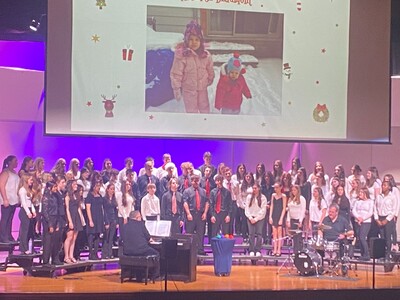Facts About the Montessori Method
Misconception #1: Montessori is just for
preschool children
Truth: Although most Montessori schools in the
United States are preschools, Montessori programs are designed for
levels from birth to eighteen.
Misconception #2: Montessori is just for special
learners—the gifted or the learning-disabled
Truth: While the Montessori Method is highly
effective with both learning-disabled and gifted learners, it is
designed to ensure success for all children.
Misconception #3: Montessori schools are
religious
Truth: Though some Montessori schools have a
religious component to their program, the majority are independent
of any religious affiliation.
Misconception #4: Children are unsupervised and
can do whatever they want
Truth: The Montessori Method gives children the
power of “free choice of purposeful activity.” That means the
children learn how to use materials through lessons in an
environment prepared by a Montessori-certified
teacher as well as through modeling of the
children’s peers. The teacher may intervene and gently redirect
the child either to more appropriate materials or to a more
appropriate use of the material only if the child is being
destructive or is using materials in an inappropriate manner.
Misconception #5: Montessori classrooms are too
structured
Truth: While students are given the freedom to
choose from a vast variety of activities in the Montessori classroom
and discover the possibilities on their own, the teacher gives
lessons to carefully illustrate the specific purpose for each
material and clearly demonstrate the activities, step-by-step.
Misconception #6: Montessori is a cult
Truth: Montessori is part of mainstream
education. Cleveland State University, New York University and
Xavier University are three of the growing numbers of universities
offering graduate-level programs in Montessori education.
Montessori’s popularity in public schools increases annually.
Misconception #7: Montessori is against fantasy;
therefore, Montessori stifles creativity
Truth: Instead of being against fantasy and
creativity, Dr. Montessori found that children prefer activities
providing practical experiences that fulfill their inner needs. The
“freedom with guidance” approach to learning encourages
creativity in problem-solving though fantasy play initiated by the
child. This approach is considered healthy and purposeful, while
teacher-directed fantasy is discouraged. Additionally, art and music
activities are integral parts of the Montessori classroom.
Misconception #8: Montessori pushes children too
far, too fast
Truth: The Montessori philosophy allows each
child to develop at his/her own individual pace. Montessori teachers
never push children toward anything. In these
scientifically-prepared environments, possibilities open for
children to learn at their own pace, and they excel far beyond
traditional expectations for their age levels.
Misconception #9: Montessori is outdated
Truth: While appropriate changes have been made
to the original Montessori curriculum (including the introduction of
computers and modifications to the Practical Life exercises to keep
them culturally relevant), the child guidance strategies has not
changed much since Dr. Montessori’s lifetime. Contemporary
research and evaluations confirm Montessori’s insights.
Misconception #10: There is no play in
Montessori
Truth: The children at the 3-to-6-year-old level
do not really distinguish between work and play. Their work in the
Montessori classroom is their play. They enjoy themselves and
interact with others. Art, music and drama curricula allow for
creative play in the Montessori classroom.
Misconception #11: Montessori discourages
children from working together
Truth: Children in Montessori classrooms have a
choice to work alone or in groups as long as they are not disruptive
to other students. Between the ages of 3 and 6, children generally
want to work alone and the Montessori environment supports that
desire. Students age 6 to 9 and 9 to 12 years old often work
together in small groups. There is nothing about the 3-to-6-year age
group that would discourage working together later on. Students at
this age simply are not in the same developmental plane as older
students. Dr. Maria Montessori did not intend for the children to
isolate themselves from others when working, but rather it happens
more naturally.
Shared by The Westwood Montessori School on behalf of Faye Lundberg: Administrator.
For more information please
contact The Westwood Montessori School:
738 High St. Westwood, MA 02090
781-329-5557~wwmont@verizon.net~westwoodmontessori.org












